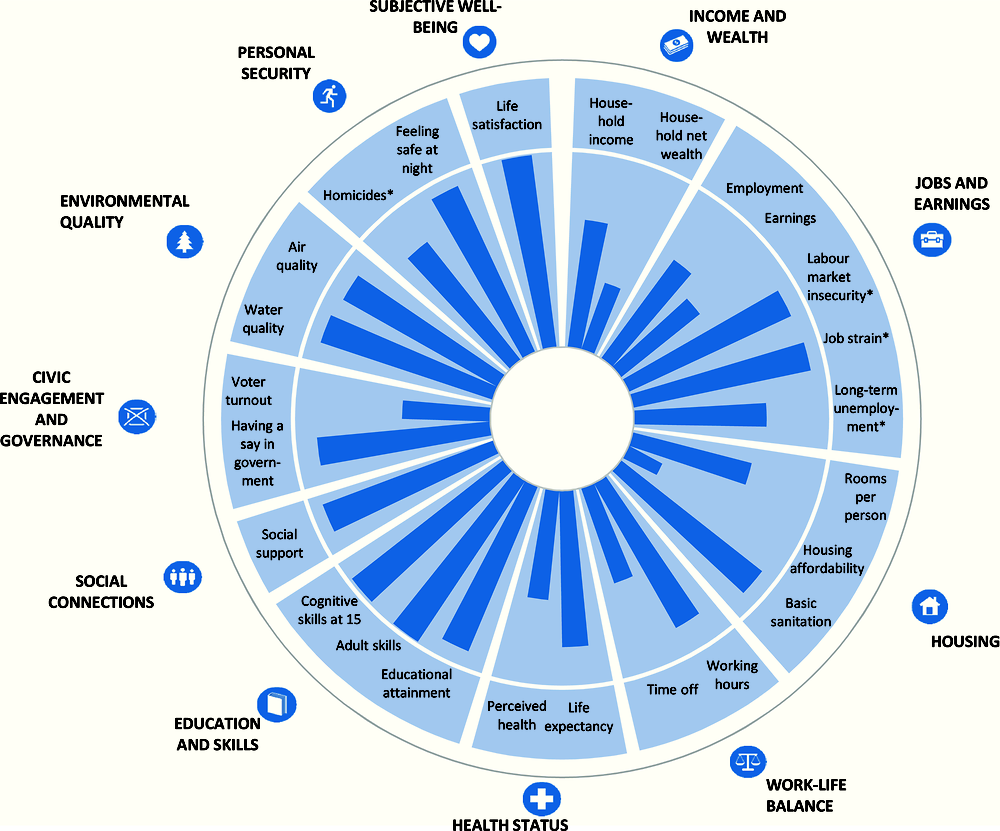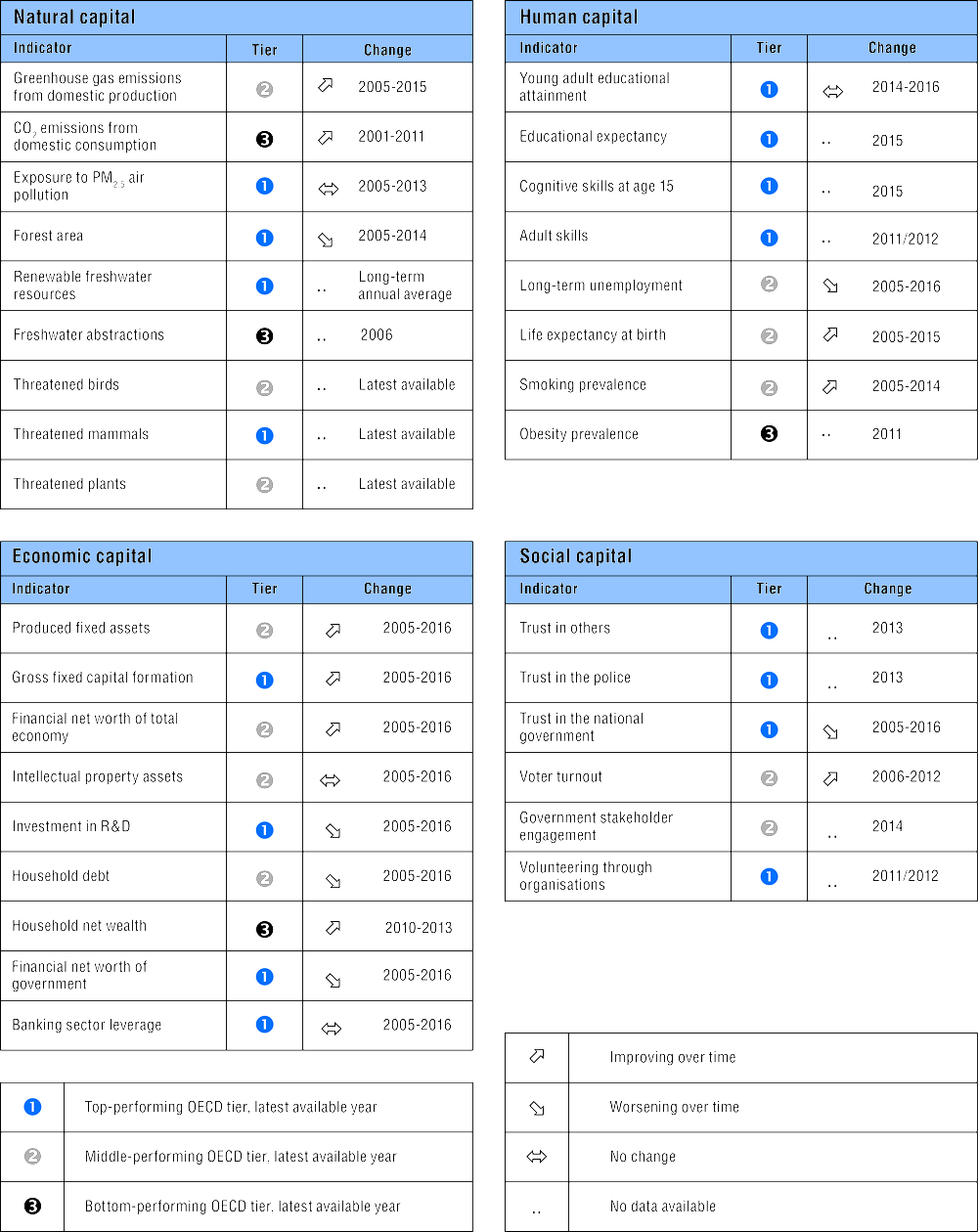How's life in Finland?
In general, Finland performs well across the different well-being dimensions relative to other OECD countries. Despite levels of household net adjusted disposable income and household net wealth that fall below the OECD average, Finland benefits from comparatively low levels of both job strain and labour market insecurity. Only around 4% of Finnish employees regularly work very long hours, approximately one-third of the OECD average level, but time off (i.e. time spent on leisure and personal care) is close to the average. Finland performs very well in terms of education and skills as well as social support: 95% of Finns report having friends or relatives whom they can count on in times of trouble, compared to the OECD average of 89%. Air and water quality are both areas of comparative strength, and in 2013, life satisfaction in Finland was among the highest in the OECD. However, housing affordability is below the OECD average, and despite having a comparatively high share of people who feel that they have a say in what the government does (47%, compared to 33% for the OECD on average), Finland has a mid-ranking level of voter turnout.


